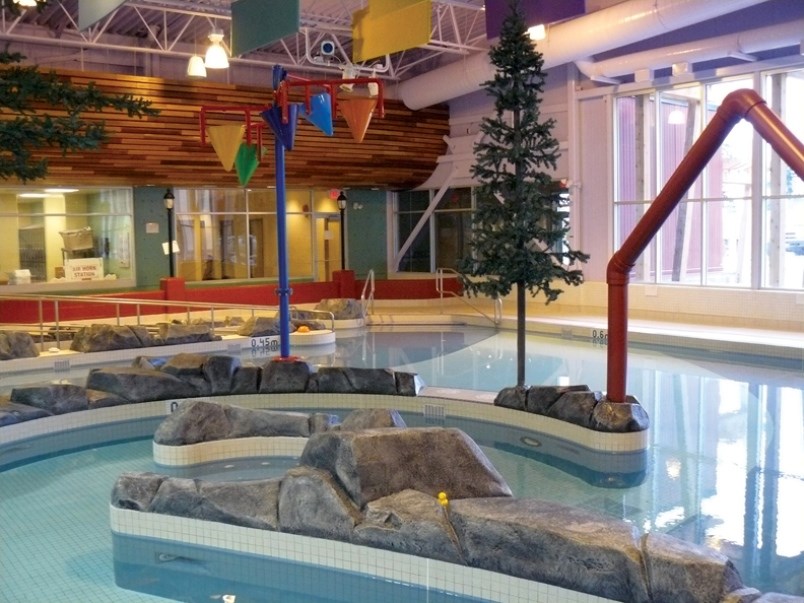Directors bit the bullet and committed to reopening most Sunshine Coast Regional District (SCRD) recreation facilities in September, at the predicted cost of a five per cent tax hike next year.
At a July 30 board meeting – the last one before the usual August break – directors finalized a decision made at committee a week before to reopen the Gibsons and Area Community Centre and ice rink at service level two, and to open the Sunshine Coast Arena for dry-floor use, beginning in September.
They stuck with their decision to open the Pender Harbour Aquatic and Fitness Centre at service level one starting Sept. 14 and to keep the Gibsons pool closed for the rest of the year.
As well, they voted to open the Sechelt Aquatic Centre at service level two.
“Service level two” operations allow for fitness classes and other programming with modifications to stay in line with public health rules and guidelines, while “service level one” means no instructor-led programs and other limitations.
At a July 23 committee meeting they had voted to delay making a decision on the Sechelt Aquatic Centre until September, but decided on July 30 to move ahead with a September opening after reviewing financial implications and hearing from the community.
Elphinstone director Donna McMahon and Area F director Mark Hiltz opposed that decision.
Additionally, directors are moving forward with a unique proposal, initially raised by Town of Gibsons director David Croal: exploring whether corporate sponsorships and individual donations could offset the deficit.
That deficit will be a large one – and one directors debated at length on July 30.
With the current restart plan, staff project a recreation services budget deficit of approximately $1 million, which would result in a five per cent tax increase.
Keeping the facilities closed, however, is almost as expensive. The recreation budget would still run a deficit of at least $800,000.
That’s because the bulk of that deficit – $687,650 – comes from fixed overhead costs such as a “support service levy,” insurance, utilities and salaries, including managerial positions.
During discussion, Sechelt director Alton Toth repeatedly asked why, if they were fixed costs, they hadn’t been budgeted for. “How are these costs not covered in the budget we passed at the end of March? We knew those costs were coming.”
In March, SCRD staff made “drastic changes” to the recreation budget to reduce expenses by $1.2 million, cutting wages and administrative and operating costs, a staff report said. They also anticipated they would lose more than $650,000 in user fees and service charges.
By way of explanation, chief financial officer Tina Perreault said “staff did their best effort to match the revenues that would pay for those expenditures,” and noted the revenue drop built into the amended budget.
Both Sechelt director Darnelda Siegers and Roberts Creek director Andreas Tize acknowledged the pressure staff were under in March to amend the budget. “Everybody made the decision at the time with the knowledge that they had… We are where we are and I personally like the recommendations,” said Tize.
Like Toth, McMahon also wasn’t satisfied with the budget breakdown, describing the report as “very complicated … to put it mildly.”
She said she was “really concerned” over the ambiguity in how expenses are accounted for in recreation. “We cannot pull these numbers apart and get a really clear idea of what each one of these facilities is costing us to run. That makes it very difficult for us to suss out what’s going on here,” she said, noting that despite cutting the budget in March by more than $1 million, recreation is still facing a $1-million deficit.
She also raised concern over staffing levels. Currently $250,000 is being spent on about eight program coordinator and managerial positions. “We laid off basically all the casual staff, which are the lower paid staff, but we have retained all the managers to manage a facility that’s closed,” she said.
“It creates a situation which is just breathtakingly expensive and not responsive to the drop in revenue and the necessity of keeping things closed.”
Planning and community development manager Ian Hall said those positions have shifted to focusing on restart preparations and procedures.
The report also said that an additional $22,000 could be saved by adjusting staff hours.
Chair Lori Pratt said the shortfall is “really mind-boggling,” and that a five per cent tax increase will be “a very difficult one for the community to look at.”
Staff also floated the idea of using $500,000 in capital funds to cover off the deficit, “with potential future costs and service level impacts.” Directors decided to wait to look at that option.



